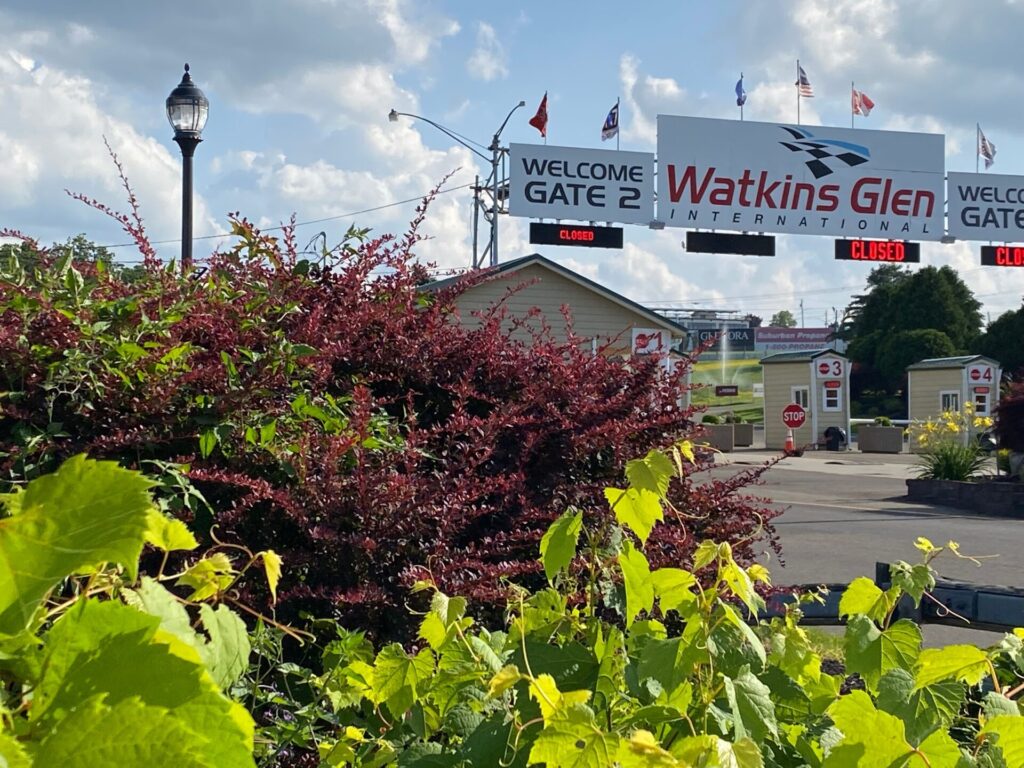GOING TO THE GLEN
Watkins Glen. Located in the beautiful Finger Lakes region of upstate New York, near Lake Seneca, it was once the proud home of the United States Grand Prix; still remembered fondly by those who raced, and those who saw Formula 1 Grand Prix cars there from 1961 to 1980.

Signor Pat Scopelliti is one of the founding members of the F1W familia, and longtime resident of the Watkins Glen area. He knows the track like the back of his hand and gave me three historical – with live commentary – laps of this magnificent and important piece of Formula 1 history. The photo shows Pat piloting his Toyota Prius like a pro – very pleased to confirm he did not create a Trulli train.
The track saw several historical firsts and, like any other great racing track, had its share of sad and tragic moments.
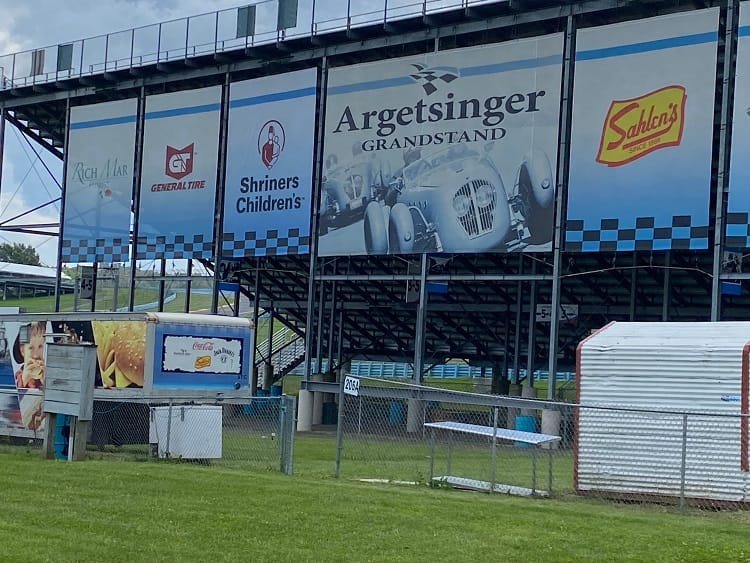
The Argetsinger Grandstand. Named after lawyer and racing enthusiast Cameron Argetsinger, he was instrumental in bringing sports car racing to the streets of Watkins Glen which led to one of the most beautiful circuits anywhere in the world. I met his son Peter in September 1982 at Brands Hatch where he was a racing instructor. That season he also raced in the British Formula 3 championship.
It all started when prominent local attorney, Cameron Argetsinger, brought the globe trotting Formula 1 circus to the little town, far from the humdrum of New York City.
The inaugural United States Grand Prix at Watkins Glen in 1961 took place on October 8. It was the final race of the season. One hundred laps of the 2.35-mile long circuit. The star studded field included two-time world champion from Australia Jack Brabham. “Mr. Motor Racing ”, Stirling Moss. Motorcycle world champion, John Surtees. Kiwi Bruce McLaren. And a young Scottish farmer turned racing driver, Jim Clark.
There were seven American drivers in the race. Among them Jim Hall, later to be famous for Chaparral racing cars, and Roger Penske, later to be famous and uber successful in anything and everything the world of motor racing has to offer.
Jack Brabham started from pole position in his Cooper-Climax. After over 2 hours of racing victory went to Colin Chapman’s team Lotus-Climax. Not with his star-in-the-making driver Jim Clark but the other Scotsman in the team, Innes Ireland. This was Colin’s first taste of success in Formula 1.
Dan Gurney was second in his Porsche while Tony Brooks in a BRM-Climax completed the podium.
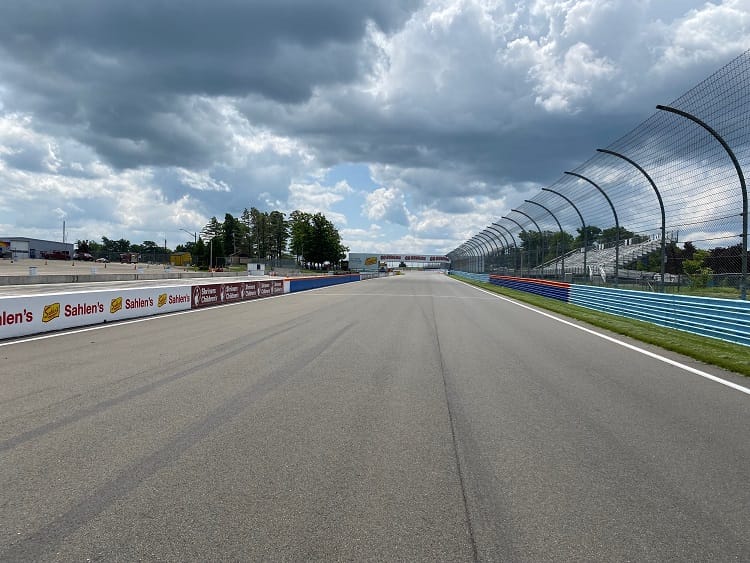
Legends of Formula 1 drove winning laps at Watkins Glen; Jim Clark, Graham Hill, Jackie Stewart, Jochen Rindt, Emerson Fittipald, Ronnie Peterson and Niki Lauda. Mario Andretti started his Formula 1 career here – from pole position.
The 1962 US Grand Prix at the Glen, on October 7, was the penultimate round of the championship before the season finale in South Africa at the Prince George Circuit in East London.
Jim Clark won from pole position in his Lotus. “I planned to get in front and stay there,” said the Scotsman after the race. Graham Hill was second in his BRM. Third man on the podium, Bruce McLaren in a Cooper-Climax, was a lap down.
Among the local drivers, Dan Gurney was 5th. for Porsche and Roger Penske finished 9th. in his Lotus-Climax.
Timmy Mayer, brother of Teddy Mayer of McLaren fame, retired his Cooper-Climax with ignition issues. Two years later Timmy was killed in a Tasman series race at the Longford Circuit in Tasmania, Australia.
The race distance for the 1963 US Grand Prix was extended to 110 laps. This was the season in which all 10 races of the season were won by British drivers. Graham Hill took two victories at the wheel of his BRM, Monte Carlo and Watkins Glen, where local teammate Richie Ginther was second. Jim Clark, who won seven races in 1963, was third in his Lotus-Climax.
Graham Hill would go two-in-a-row at Watkins Glen by winning the 1964 USGP, again driving for BRM. John Surtees was second for Ferrari, Swiss driver Jo Siffert was third in his Brabham-BRM. Jim Clark started from pole position and set the fastest lap but did not finish the race.

The Seneca Lodge. Favorite among the Grand Prix drivers. It is still in operation and walls are adorned with memorabilia from a bygone era. Needless to say, Graham Hill was the life of the party.
The 1965 Formula 1 race would result in a hat-trick for Englishman Hill. He started from pole position in his BRM and took the lead from Jim Clark’s Lotus on lap 5 of 110, winning the race by 12s over Dan Gurney’s Brabham-Climax and also set the fastest lap of the race. Jack Brabham, already a double world champion at this stage, was third in his own creation.
Bob Bondurant, who would later establish his own racing school, finished 9th. for Ferrari.
The race distance for the 1966 event was reduced by two laps to 108. Jack Brabham took pole position in his Brabham-Repco.
But the day belonged to Jim Clark. He not only won the race but lapped the entire field and gave BRM H16 the only victory in Formula 1 championship for a 16-cylinder engine. Jochen Rindt was second in his Cooper-Maserati. His teammate John Surtees was third and set the fastest lap.
In 1967, Team Lotus cars with Graham Hill on pole and Jim Clark started from the front row. The race result was reversed, the Scottish sheep farmer winning the race over his teammate and member of London Rowing Club, the colors of their helmet adorned his racing helmet. That tradition was continued by Graham’s son Damon on his way to world championship success in 1996.
Kiwi Denny Hulme, world champion in 1967, was third in a Brabham-Repco.
Guy Ligier, who later started his own Formula 1 team, retired his Brabham-Repco on lap 43 of 108.
In 1968, two American racing legends made their Formula 1 debut at Watkins Glen.
Mario Andretti started his grand prix career in grand style by taking pole position at the wheel of his Lotus-Ford. Bobby Unser qualified 19th in a BRM, a car he would later describe in an F1Weekly interview as “piece of junk.”
The podium was a British invasion. Jacke Stewart led the race from start to finish in his beautiful blue Matra-Ford and recorded the fastest lap. Graham Hill was second in his Lotus-Ford and John Surtees third, a lap down, for Honda. There has not been an all-British podium Formula 1 since then.
The 1969 US Grand Prix at the Glen started a hat-trick of maiden wins.
Jochen Rindt, the King of Formula 2, scored his first victory in Formula 1 driving for Colin Chapman. He started from pole position and recorded the fastest lap of the race. Second was Frank Williams’ good friend Piers Courage in a Brabham-Ford. John Surtees in a BRM was third.
In 1970, another young Chapman charger, Emerson Fittipaldi, took his first win in what was only his fourth grand prix start. Pedro Rodriguez was second in a BRM with Swedish debutant Reine Wisell third in the second Lotus.
Ferrari’s pole sitter Jacky Ickx could only manage fourth place finish, thus, ensuring the championship was won posthumously by Jochen Rindt who had lost his life at Monza.
Debonair Frenchman François Cevert became a one hit wonder for Uncle Ken in 1971. This was the first grand prix victory in a Formula 1 championship race by a French driver since Maurice Trintignant in 1958 at Monaco.
Swiss Jo Siffert was second for BRM and Swede Ronnie Peterson was third driving for Max Mosley’s March team.
Jackie Stewart led a Tyrrell one-two over Cevert in 1972. “JYS” started from pole position, sharing the front row with NY native Peter Revson in a McLaren-Ford. Denny Hulme finished third for McLaren.
Mario Andretti, driving for Ferrari, collected the final point from his sixth place finish. Bobby Unser’s BFF in later years from the ABC’s Indy 500 broadcast, Sam Posey, was classified 12th in his Surtees. Skip Barber, later famous for his racing school, was 16th in a March.
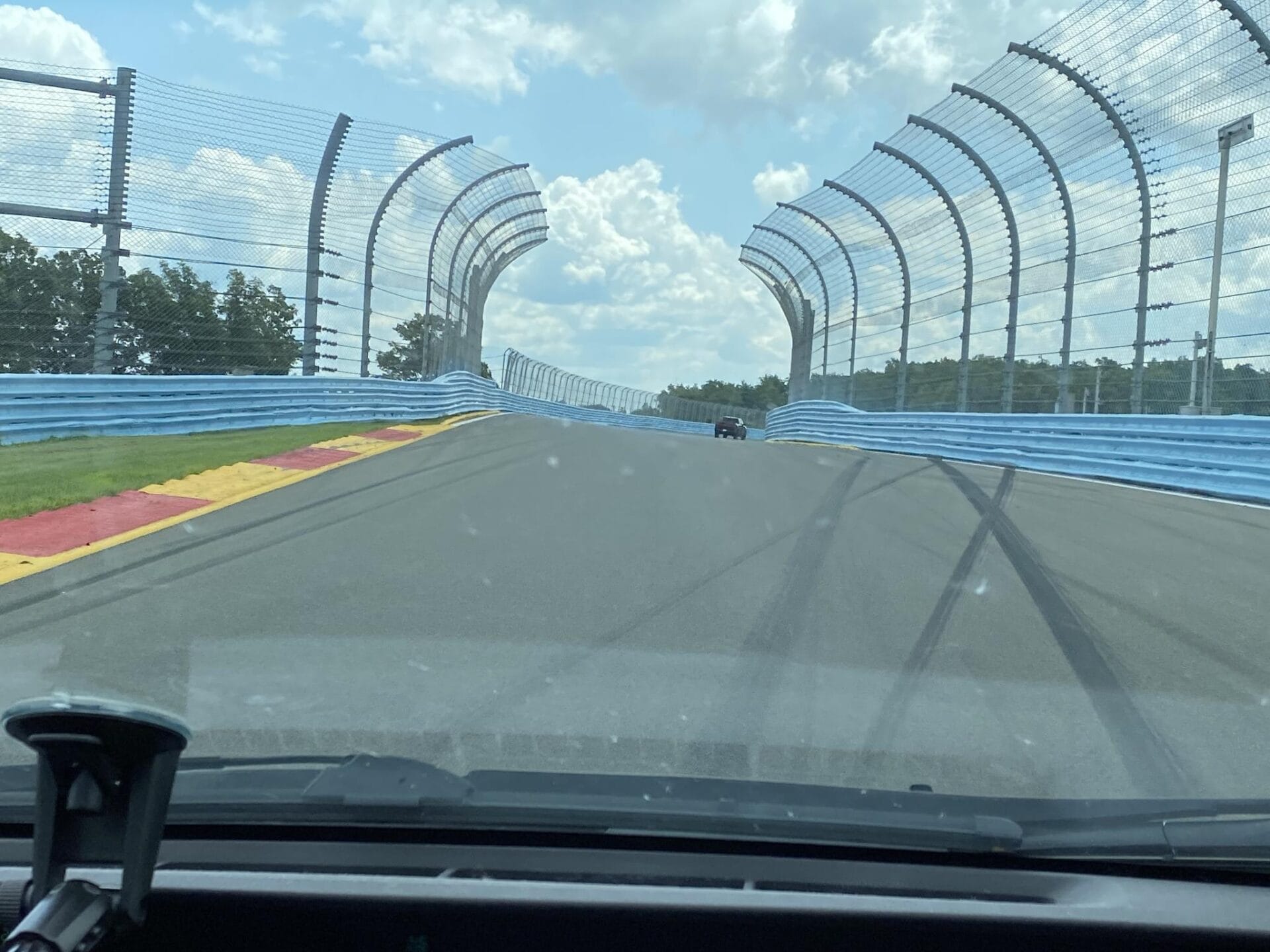
The Last Lap. The Glen would take the life of its 1971 winner. In Saturday’s qualifying for the 1973 USGP, French driver François Cevert crashed his Tyrrell on this part of the track and was killed instantly. On Sunday, among the drivers racing in the grand prix was his brother-in-law, Jean-Pierre Beltoise.
Watkins Glen was the final round of the 1973 Formula 1 season. The race was going to be Jackie Stewart’s 100th. and final grand prix as the Scotsman wanted to go out on a high as world champion.
Sadly, tragedy struck in Saturday’s qualifying session when his Tyrrell teammate François Cevert lost control of his car and crashed with fatal consequences. “JYS” decided right there and then to quit motor racing once and for all as a driver.
Sweden’s Ronnie Peterson won the race on Sunday and with it earned the biggest payout of the season, $50,000.
Bernie Ecclestone owned Brabham team triumphed in 1974 with Argentine Carlos Reutemann with teammate from neighboring Brazil Carlos Pace second. James Hunt, driving for “The Good Lord” Hesketh, was an impressive third man on the podium.
The race was the season finale and both McLaren’s Emerson Fittipaldi and Ferrari’s Clay Regazzoni started the event on equal points. The Brazilian cruised to fourth place finish at the end to collect his second world title in three years.
Unfortunately, for the second year in a row tragedy struck as young Austrian driver Helmuth Koinigg lost his life when he crashed into the Armco barriers on lap 10 after a suspension failure on his Surtees.
In 1975, Ferrari’s new world champion Niki Lauda closed the season on a winning note. Fittipaldi was second and his West German McLaren teammate Jochen Mass third.
The bitterly contested 1976 season between McLaren’s James Hunt and Ferrari’s Niki Lauda came to the Glen for the penultimate round on October 10th as the United States Grand Prix East. The inaugural USGP West took place in March of that year in the streets of Long Beach.
The English Playboy driver, also known as “Hunt the Shunt”, took pole position and set the fastest lap of the race on his way to victory to take his epic “Rush” battle to the season finale at Mt. Fuji circuit in Japan.
Hunt would repeat his Glen glory the following year also. Mario Andretti was second in his Lotus.
In 1978, both the US Grands Prix – East & West – were won by Carlos Reutemann in his beautiful Mauro Forghieri-designed Ferrari 312T3. Bobby Rahal was ranked 20th. in his Wolf-Ford at the Glen.
In 1979, the effervescent French-Canadian Gilles Villeneuve would repeat the above feat. The Watkins Glen podium had an all French flair as Rene Arnoux was second in his turbo-charged Renault with compadre Didier Pironi third in his Tyrrell.
The 1980 United States Grand Prix East was the 14th. and final round of the season. It also turned out to be the final Formula 1 race at Watkins Glen. Italian Bruno Giacomelli took pole position in his Alfa Romeo. The winner was newly crowned world champion from Australia
Alan Jones in his Williams.
Today, the beautiful Watkins Glen International is owned by NASCAR.
Single seaters, from Formula 1 and Indy cars, are gone. Main events now are Nascar Cup and IMSA sports car series.
Watkins Glen is a great historical venue set in a beautiful area of the Empire state. A trip – race or no race – is highly recommended.
So is the three lap experience available in your own vehicle.
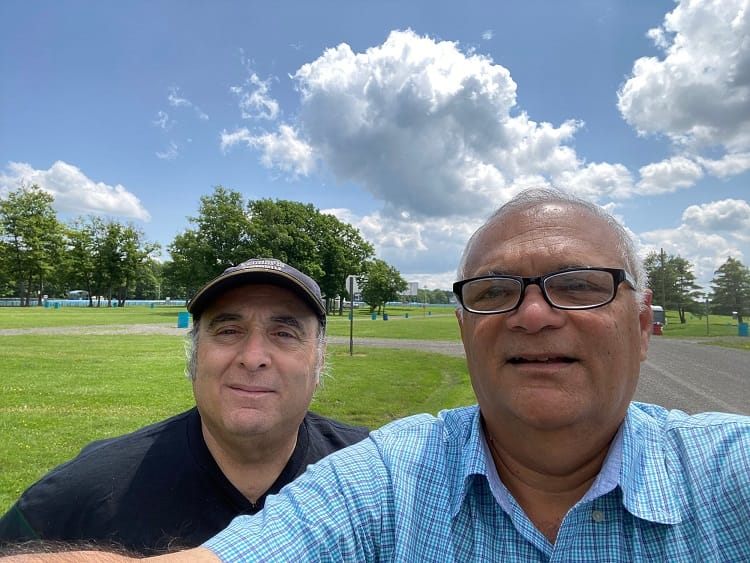
Watkins Glen. Dos amigos.
– – Nasir Hameed.
